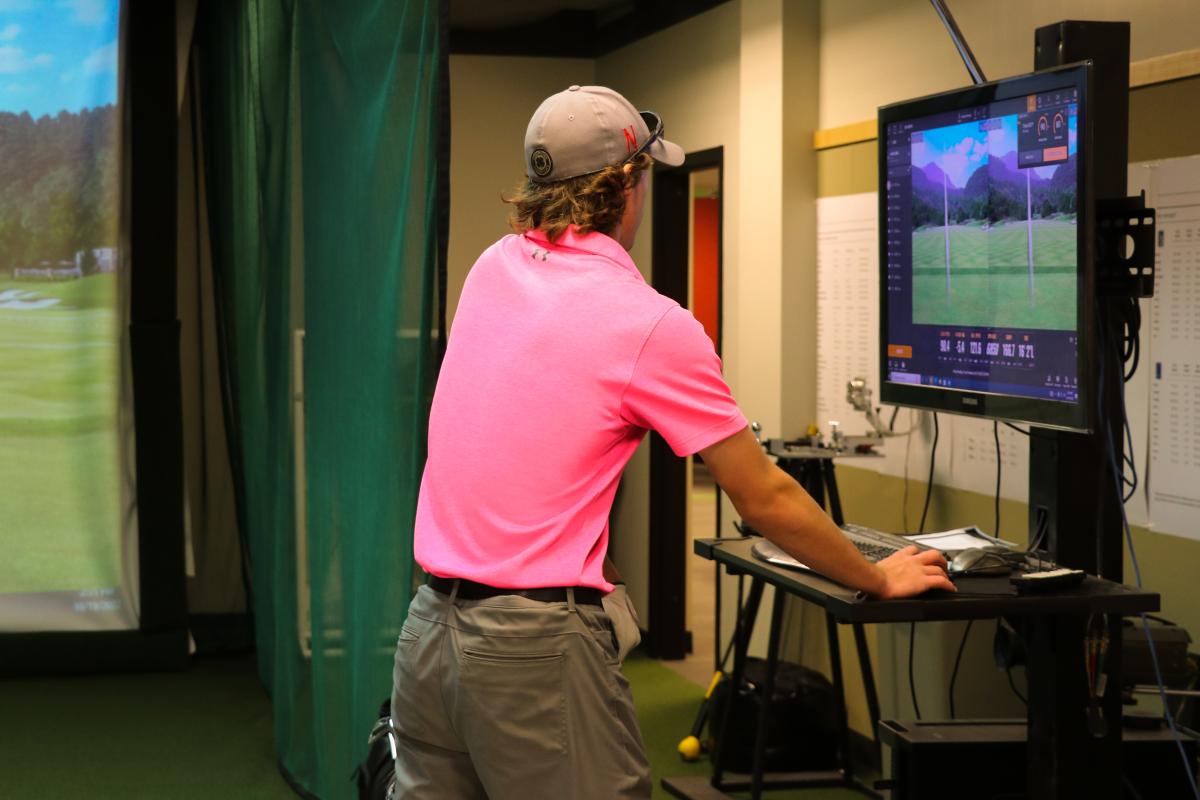
Technology in the Tee Box
Digital Data Advances Golf Management Program
Technology advancements in golf management, paired with a focus on agriculture, create a premier experience and result in comprehensive expertise.
The Professional Golfers’ Association of America (PGA) Golf Management program in the College of Agricultural Sciences and Natural Resources (CASNR) at the University of Nebraska-Lincoln provides students with unmatched exposure to technology.
Nebraska’s golf industry, with more than 200 courses, is in a favorable position to recruit exceptional graduates of the program and grow the sport.
Brad Goetsch, assistant professor of practice in the PGA Golf Management program, leverages new technology to exhibit the dynamic pathways within golf management to recruit prospective students like Blare Bauer, a December 2022 graduate of the program.
Technological resources available at the university’s program, such as high-speed camera systems and doppler radar, improve industry experiences and employability for all students.
“Learning how to use the systems and understand the data has prepared me for real-world experiences,” Bauer said. “Experiences with the TrackMan Golf Simulator and other digital tools in our golf lab give a competitive edge when applying for jobs.”
In addition to technology, Dann Husmann, director of the PGA Golf Management program at the university, said the program’s unique position in CASNR enables students to gain insight on turfgrass and soil management – something not offered in other programs.
“Understanding the dynamics of the soil under the turf has a direct influence and impact on the health of the turf and what a golfer sees on a green grass golf course,” Husmann said.
Technology Boosts the Program’s Course
The PGA program is equipped with state-of-the-art lab spaces that feature TrackMan Golf Simulators, GCQuad Launch Monitors, and Phantom High-Speed Cameras. Along with Goetsch’s personal outreach to prospective students, Husmann said PGA’s premier facilities drive recruitment and retention.
“Our program has technology from each manufacturer brand represented within our collection, which no other program does,” Goetsch said. “Our students also feel like their desires are accounted for because the program is broad.”
Bauer said technological advancements have allowed him to thoughtfully consider wind speed, course slope, and yardage to increase accuracy, even when playing in simulation.
“Access to simulators in our program is essential to keeping our golf game dialed in,” Bauer said. “For instance, we can be playing virtual golf at Pebble Beach in California, from Nebraska, during the winter months.”
Advanced technology in these programs analyzes facets of a player’s game that affect overall success on the course, including club impact, golf ball flight, and body movement. Goetsch adopted TrackMan’s educational curriculum to teach students to operate the equipment and interpret data, leading to a certification upon successful completion of the course.
“Teaching students responsible use of technology, not using it as a crutch, is a critical piece of the game,” Goetsch said. “Students understand its place as a tool within the human interpersonal interaction that always needs to take place.”
Based on what they learn from the technology, Husmann said students recognize patterns in data to create actionable information for beginning, intermediate, and advanced golfers they may coach during their career. The definite scientific feedback is pivotal in correcting and improving specific aspects of a player’s game, influencing enjoyment on the course.
“Upon graduation, PGA students can provide clients a lesson or series of lessons to improve a certain facet of their golf game when called upon,” Husmann said.
Driving the Future of Golf
The future of golf technology in education is promising as equipment becomes more portable and affordable. In addition, engineers are capitalizing on new-age materials to improve equipment mass and software compatibility.
“Advancements in the golf industry are an example of modern engineering and a testament to the quality of the manufacturers who have studied and produced this technology,” Bauer said.
For more information, visit https://grassland.unl.edu/pgm.
Key Takeaways
- The Professional Golfers’ Association of America (PGA) Golf Management program provides students with unmatched exposure to technology, resulting in comprehensive expertise.
- Nebraska’s golf industry, with more than 200 courses, is in a favorable position to recruit exceptional graduates of the program and grow the sport.
- The PGA program is equipped with state-of-the-art lab spaces that feature TrackMan Golf Simulators, GCQuad Launch Monitors, and Phantom High-Speed Cameras.
- Technological resources such as high-speed camera systems and doppler radar improve industry experiences and employability for all students.
- For more information, visit https://grassland.unl.edu/pgm.
